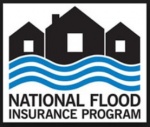Financial Services Committee Releases Flood Insurance Reform Bill Summary

House Financial Services Committee Chair Jeb Hensarling (R-TX) recently released a discussion draft summarizing legislation he intends to introduce soon that will reauthorize and reform the National Flood Insurance Program (NFIP). NFIP’s authorization is scheduled to expire at the end of fiscal year (FY) 2017. Hensarling says that NFIP reform will be one the Committee’s top priorities this year.
Partially because NFIP is currently running a debt of over $24 billion, the bill would tighten some of NFIP’s coverage standards in an attempt to improve the program’s financial health. Specifically, the bill would phase out within four years NFIP coverage for all single-family residential structures (those with 1-4 units) with estimated replacement costs that exceed $1 million. NFIP would also after four years be prohibited from selling new policy coverage to new structures built in those areas that are determined to be at the highest risk of flooding. Both of these prohibitions would apply only to properties located in communities with active private flood insurance markets.
The bill would also prohibit NFIP from offering new or renewed coverage for any property for which NFIP has paid claims payments that exceed twice the amount of the property’s replacement value. This prohibition would apply to flood damage that occurs beginning 18 months after the bill is enacted into law. In addition, the bill would require local communities to develop specific flood risk mitigation plans in flood-prone areas (communities with 50 or more multiple loss structures or five or more severe repetitive loss structures). It would also authorize the Federal Emergency Management Agency (FEMA) to establish a pilot program to provide financial assistance for low-income homeowners and incentivize communities to purchase and acquire properties that have incurred substantial damage from flood events.
The bill would also require FEMA to conduct an independent actuarial analysis of NFIP each year; raise NFIP’s annual Reserve Fund assessment fees by one percent after every year it doesn’t collect the statutory minimum amount; require FEMA to transfer a portion of NFIP’s risk to private entities through risk-sharing arrangements; and cap compensation for private insurance brokers who sell NFIP policies through the Write-Your-Own (WYO) market at 25 percent of the homeowners’ premiums.
The bill also includes several provisions designed to limit flood insurance costs for consumers. It would reduce the cap on annual rate increases for individual policyholders to 15 percent from 18 percent and set the maximum chargeable risk premium for residential properties at $10,000. State governments would have the option of creating affordability programs through which states would identify and qualify low-income residents who are eligible for premium discounts. The bill would also require FEMA to expedite the implementation of a program, authorized in previous legislation, to allow policyholders who have not escrowed for their flood insurance costs to pay their premiums in monthly installments instead of one lump-sum payment.
Other provisions in the bill seek to increase private sector participation in the flood insurance market by giving states more flexibility to approve and regulate private flood insurers and allowing WYO insurers to also offer private flood insurance policies. The bill would also require FEMA to establish an open-source data system that will allow the public to access the information it uses to determine properties’ flood risk. Local communities would be permitted to submit for approval to FEMA their own alternatives to NFIP flood maps.

